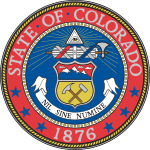Campaign
At the Democratic convention, a crowded slate of candidates was slightly winnowed down. Paul P. Prosser, a prominent Denver attorney who had previously been elected as the Howard County, Missouri, Prosecuting Attorney, placed first with 569 1/2 votes. He was followed by former Governor William Ellery Sweet with 279 1/2, former State House Speaker Harry L. Lubers with 133, and former labor leader Frank J. Hayes with 121. Attorney H. C. Fink received only 18 votes and was eliminated. [5] Shortly after the convention, Lubers dropped out, concluding that he lacked the financial resources to compete in the primary. [6] Sweet ended up defeating Prosser and Hayes by a decisive margin, though he fell just short of winning a majority.



